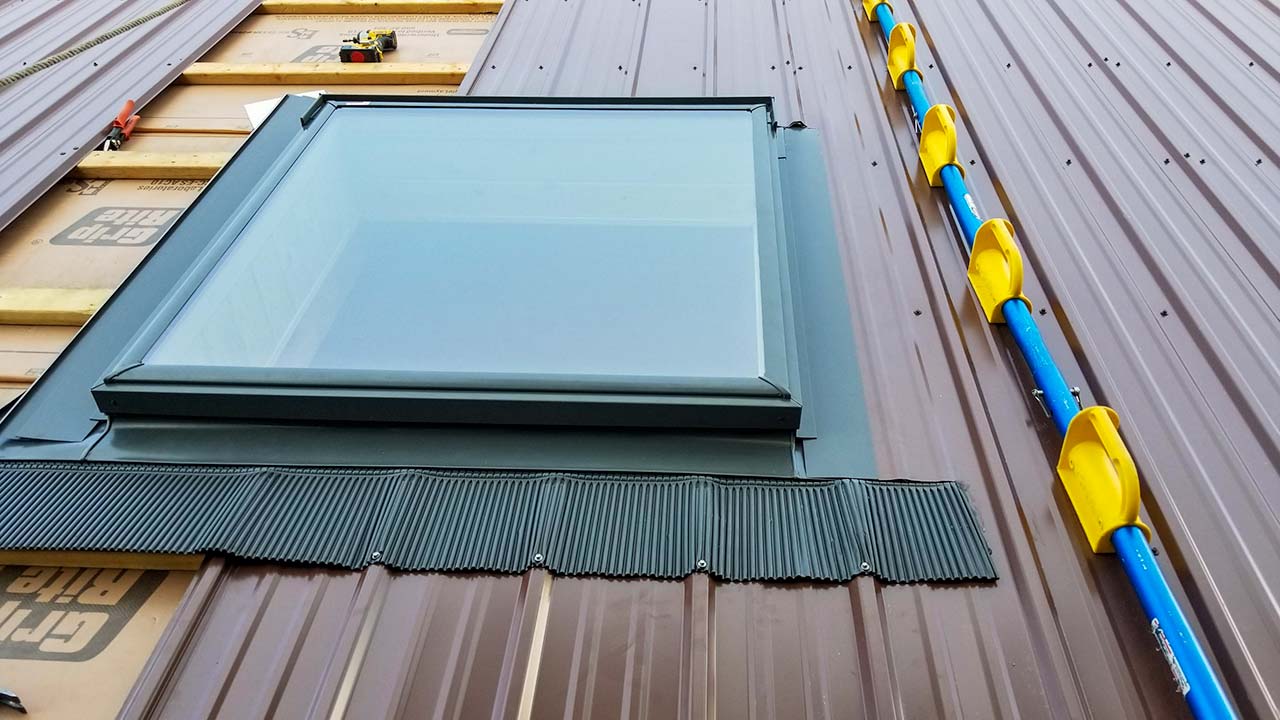
Vented skylights, which include manually operated varieties you can open or close with a hand crank or motorized options you can control with a remote, increase the risk of leaks and heat loss or build-up. But they don’t promote air circulation, which makes them a better option for rooms that are already well-ventilated. Because fixed skylights transmit only light and are designed to keep in heat and keep out moisture, they’re generally more energy-efficient and less prone to leaks. Skylights come in fixed varieties that always remain closed and vented varieties you can open or close at your discretion. Skylight shades, which come in motorized remote-controlled varieties or manually operated varieties that can be drawn open or closed with a chord, help your skylight transmit the maximum amount of visible light when open or dim and cool the room when partially or fully closed. But it substantially reduces the percentage of visible light your skylight transmits, and because window film on a skylight is impractical to remove because of its height, if removable at all, you’ll be committing to a lower level of natural lighting in the room year-round.
METAL ROOF AROUND SKYLIGHT WINDOWS
Tinting windows creates a more softly-lit, ambient indoor setting and can additionally help a skylight block out UV light if it has plastic glazing or glass that isn’t low-E. The addition of an overhead window can mean lots of light and less privacy. That said, you can dial down the brightness, glare, and heat in a room-even regain privacy-by tinting the glazing with colored window film or installing a shade below the inner pane of a skylight’s glazing. Protective glazing films or coverings regulate light and temperature levels and add privacy. But it also scratches and becomes discolored more easily, blocks little to no UV light, and is usually only sold in standard sizes and shapes such as flat, pyramidal, arched, or domed. Plastic glazing, sold in a stronger polycarbonate or weaker acrylic variety, is cheaper, half as light, and less likely to break than glass. The most durable glazing is double-paned-consisting of either two panes of tempered or laminated glass or an outer pane of tempered glass over an inner pane of laminated glass. If you choose glass glazing, be sure to select tempered or laminated glass to prevent it from breaking into sharp pieces on impact.


a low-emissivity (low-E) coating, which is an invisible layer of metal oxide on the inner glass pane.Unlike plastic, glass glazing also affords two insulating options:
METAL ROOF AROUND SKYLIGHT PLUS
It’s the clearer and more scratch- and impact-resistant option, plus it resists discoloration, blocks out more UV rays, and comes in custom sizes and shapes. Glass glazing-which is twice as heavy and anywhere from 25 percent to five times more expensive than plastic-is your best bet. You’ll have your pick of either plastic or glass skylight glazing. Skylights consist of a wood, vinyl, or metal frame that holds a light-transmitting piece called glazing. Flat roofs are poor choices for skylights just for this reason. Otherwise, left standing for a bit of time, collected rainwater could stain the glazing. Gable, hip, and shed roof shapes are ideal because all have a slope that will divert rainwater and debris downward off the skylight. This may not be wide enough for your needs, given that the recommended size for a skylight is between five and 10 percent of the square footage of the room it’s lighting.Ī stick-framed roof is not an automatic green-light to the project, though the slope of the roof could still pose a challenge.



 0 kommentar(er)
0 kommentar(er)
